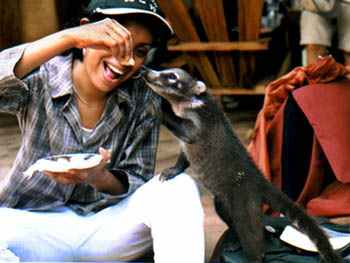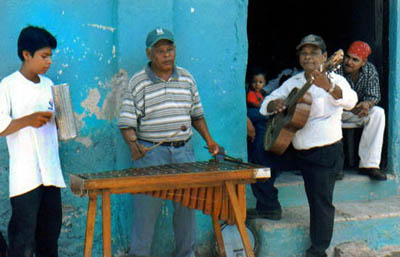People
and ethnic groups
Nicaraguans are
joyful, kind and sincere. We are said to be good
hostesses. We like to speak out loud. We are poets. We
are friendly, take care of the others, and we have tend to be very
sentimental and nostalgic.

Picture
provided by Jennifer Herrin
We are people of traditions,
especially
religious traditions, transmitted by our ancestors. An example of this are
the Religious Festivals in each town or community, honoring the "holy
protector or saint", these festivals are celebrated every year.
A Nicaraguan's faith is linked to a multitude of expressions and gatherings, not
to an individual act.
Nicaragua has a diverse ethnic mix.
The majority, 69 percent, are mestizos, of mixed European and Native
American ancestry; 17 percent are classified as white; 9 percent are of
African descent; and 5 percent are Native American. The African and Native American populations are concentrated in
the thinly settled eastern lowlands, where they are the dominant group.

Bamd in San Juan de
Oriente. Picture provided by Jennifer Herrin
The major Native American Group is
the Miskitos. Concentrated in the northeast, they live on both sides of
the border with Honduras. While many Miskitos have some Africans ancestry,
they have preserved their language and much of their culture. Many Miskitos
speak English, because they were under British influence from the late
17th until the late 19th century. Most are Protestants, due to the
activity of the Moravian Church Missionaries. There are much smaller
Native American groups of Sumo and Rama, and a very small group of mixed
African-indigenous ancestry know as Garifuna.
Nicaraguans of African descent,
known as Creoles, populate the towns along the Caribbean coast. Coming
from the British West Indies, notably Jamaica and the Cayman Islands, they
speak English and are largely Protestants. While relations between Creoles
and Miskitos have been strained, they share a common dislike of the mestizo
population of western Nicaragua, which is predominantly Spanish-speaking
and Roman Catholic. In response to rising discontent among ethnic groups,
the Nicaraguan constitution established two autonomous zones on the east
coast in 1987, giving greater powers and freedom to local governments.
Reversing a
history of exploitation and discrimination, Nicaraguan goverments have
begun efforts to recognize and strengthen indigenous cultures.
Languages
Spanish is the official
language. Creole English is widely spoken in the Caribbean as well
as Miskito and other Amerindian Languages.
![]()